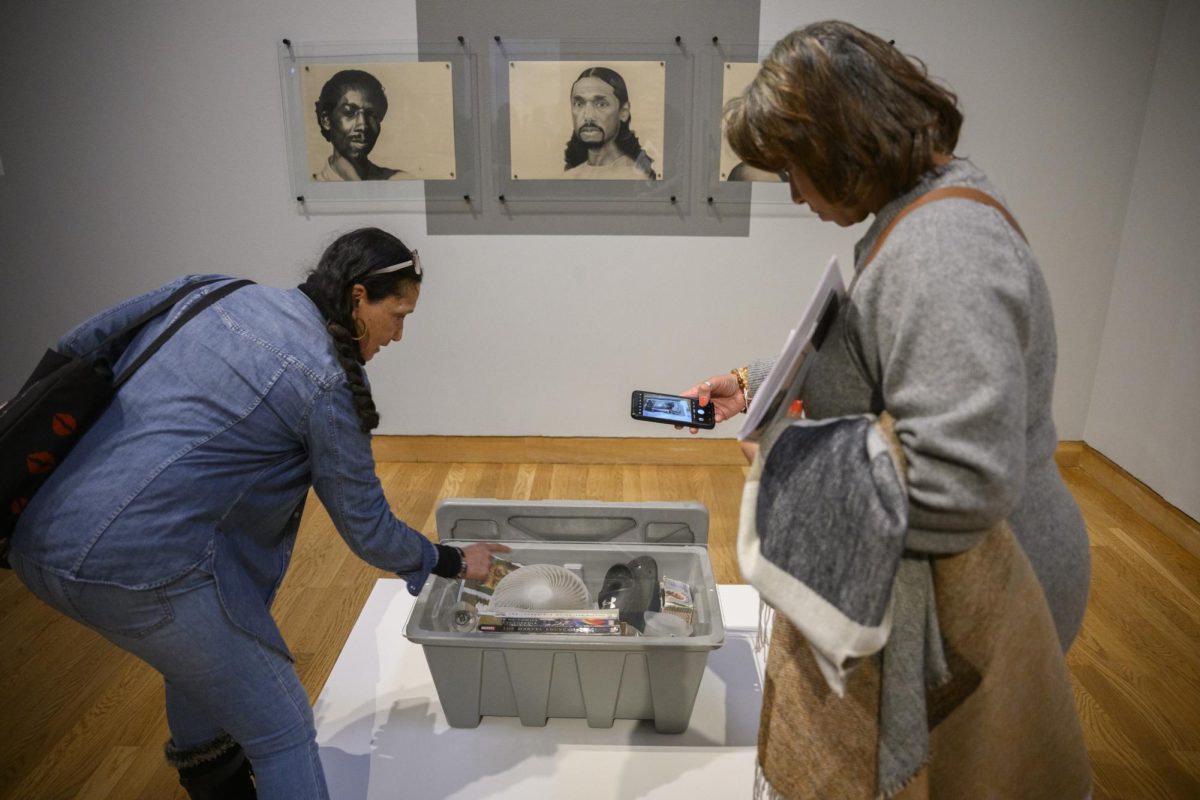Carolyn Swiszcz’s paintings feature faded signs and buildings that have seen better days. The peeling paint of windowframes peer sadly at the bright skies behind them.
Her work is featured in an exhibit that also features vibrant, colorful renderings of cityscapes.
Although the artists’ visions differ, all are fascinated by the power of cities. Their efforts come together in CITIES, a multimedia exhibition featuring the work of 10 Twin Cities photographers, sculptors and painters.
Swiszcz, from West St. Paul, has been painting sad places, including the Fargo-Moorhead area, for seven years, she said. But painting these places doesn’t make her feel blue. Instead, they captivate her.
“My interest in sad places is something I’m still trying to figure out. I like the loneliness,” Swiszcz said. “It’s like listening to a sad song that makes you feel better.”
She said she once discovered a study of the least photogenic places in the United States in a magazine, and Fargo-Moorhead was the second least photogenic.
She depicts Fargo-Moorhead buildings as they are ‘drab and muted’ but paints the northern skies behind them with bright hues.
University professor and CITIES curator Rochelle Woldorsky, who resides in the Twin Cities, has always lived in large cities. She is attracted to their familiarity and ever-changing features, she said.
The cities featured in the exhibit, like the varying perspectives on urban life presented, range from small to large, local to international. Minnesota cities like Minneapolis, St. Paul and Moorhead are depicted, as are cities as far away as the Middle East. Some works even present nameless locations, merely representations of the idea of cities.
While some of the artwork is small and simple, other works are larger than life.
Upon entering the gallery, viewers are greeted by a 40-foot long panoramic photo of Genoa, Italy, while a Styrofoam wall sculpture of a city grid hangs on the wall. On the floor sits a 24-foot city built entirely of tea cups.
Mike Melman, 67, has worked at the University as an architect for Facilities Management for almost 13 years. Melman’s black-and-white photos of the Twin Cities are on display at the exhibit.
He said his work at the University and other areas of civil service were a way for him to make a living while he practiced his photography, a field in which he thought he couldn’t “and didn’t want to” make a living.
“Once an artist tries to make a living out of their work, the fine art aspects are compromised,” Melman said. “I saw the danger in that and kept it separate.”
He has been a professional photographer for 20 years but has painted or taken photos since he was 5 years old.
Melman grew up in the Bronx, New York, and has lived in northeast Minneapolis for the past 30 years. The University of Minnesota Press published a book of his work called “The Quiet Hours.”
“All I know is the city; my poetry is in the city,” Melman said.
In addition to the exhibition, a panel discussion titled “What is the City?” is scheduled for 7 p.m. Feb. 9 in the Influx room at the gallery.







